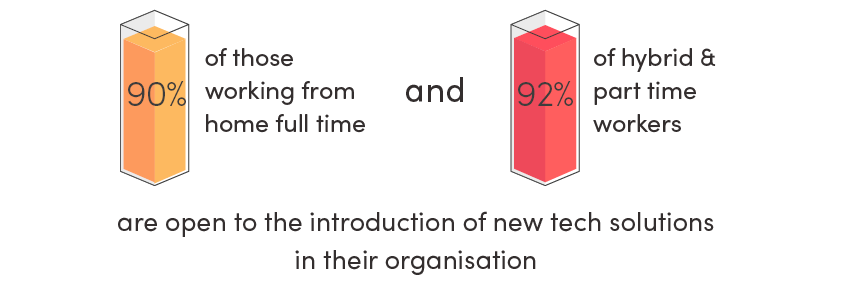
Future of work: Leading the investment in people and technology
There’s no escaping the fact that the COVID-19 pandemic has left a lasting legacy on the world around us, especially across public sector transformation, where it has opened doors in organisations where previously there were none. Investment in new technologies and innovation to support deeper change has been plenty and hugely beneficial, but the opportunity […]
There’s no escaping the fact that the COVID-19 pandemic has left a lasting legacy on the world around us, especially across public sector transformation, where it has opened doors in organisations where previously there were none.
Investment in new technologies and innovation to support deeper change has been plenty and hugely beneficial, but the opportunity now lies in continuing that journey, showing which technologies and what education is needed to further drive positive and impactful changes.
We spoke to public sector employees and senior leaders in our Future of Work survey to find out first-hand what the role of IT and the investment in people and technology looks like across local government and policing – and what it means for the future.
The evolving role of the IT department
Technology has been front and centre of the rapid changes we have experienced of late. Organisations who were previously office-bound and inherently cautious about digital innovation were quickly thrust into a remote, digital environment when the pandemic hit. Organisations set up teams overnight to support the shift of workers from office-based desks to remote workspaces, with some utilising suites of tools for the first time.
There has been a general view across public sector that the role of IT, and therefore the influence of CIOs and CTOs have ‘come into their own’ due to this. Senior leaders across public sector, along with 65% of their workforce, agreed that the IT department plays a more important role now than it did prior to March 2020, and 53% were in agreement that the IT department is now more influential within their organisation.
IT departments have shown a clear desire to move away from being a function that’s about feeding and watering boxes and wires, to one which drives digital capabilities for their organisation.
75% of those we spoke to agreed that the IT department played a vital role in the continuity of service during the pandemic, with 86% of those working from home permanently in agreement, which has likely resulted in a change in perception.
Organisations that had to pivot during the initial lockdown were in complete shock at how quickly the technology worked and how smoothly it was implemented to support the workforce. It was consistent across all those we spoke to that they were satisfied with their IT teams during this time and there were strong levels of satisfaction evident when it came to the training and support provided by the IT teams. 66% of those we spoke to agreed that they were sufficiently trained to effectively use the technology available to them, and 61% said that they had had sufficient training to use any software introduced during the pandemic.
Technology, and changes to the landscape
Despite predictions, a shift to hybrid working across all industries has not materialised. From those we spoke to across the public sector, only 39% have adopted hybrid working. But the sector has always been different in their working patterns – for instance, of those we spoke to in the police, 55% are still working solely from the office. Despite this disparity with the private sector, those who are working in a hybrid or full remote environment did say they have what is required to effectively complete their role – with 85% agreeing they have sufficient hardware, 91% having sufficient software, and 85% having a quiet space suitable for home working.
The research has pointed to a consensus across public sector organisations that, when provided with the necessary equipment, there is no advantage to working from the office.
It’s no surprise however that considerable differences emerged between perceived availability of technology within local authorities and police, with police lagging behind. As a whole, 76% of those we spoke to feel they have the technology they require for their role. But when you break this down, only 57% of police feel this way, versus 80% of those working within local authorities.
Solutions like those available within the Microsoft O365 suite could be used across organisations to help bridge this gap. Those we spoke to, for instance, viewed Teams as a ‘hero’ product which has been instrumental in facilitating home working and collaboration during the pandemic.
However, awareness to a broader range of technologies, particularly those outside of the O365 suite, seemed low. Less than 5% of those we spoke to have used products such as Asana, Jira and Slack, all products which saw huge spikes in use since the start of the pandemic. Yet, communication technologies and solutions deemed ‘new’ to the public sector are not something to be shied away from. Of those we spoke to, 87% said they are open to the introduction of new tech solutions in their organisation. This seems to be particularly the case with those working from home full time (90%) and those in a part-time or hybrid capacity (92%), showing there is limited ‘change fatigue’ within public sector workers.

Looking to technology in the future, just under two thirds (61%) agreed that service delivery could be improved by the introduction of technology, showing again that staff resistance to technological improvements is not a barrier.
As we settle down into the ‘new normal’, we must remember the benefits we have all experienced from technology over the past few years, and how, if harnessed correctly, these technologies can provide flexible and scalable solutions, keeping organisations at the forefront of digital innovation and excellent service.




